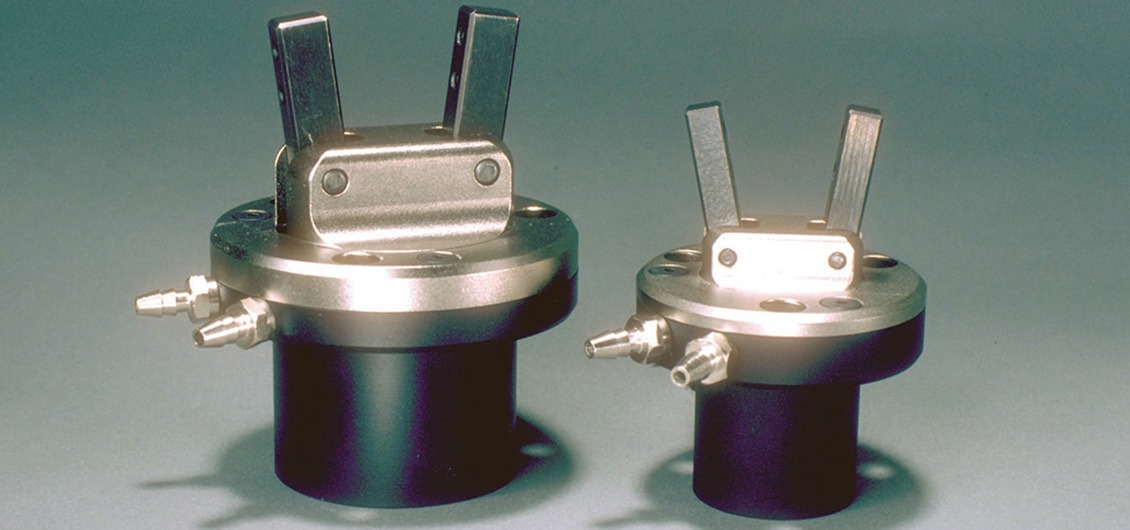A gripper is a device that allows a robot to pick up and even hold objects in its simplicity. In tandem with a collaborative industrial robot arm, grippers enable manufacturers to automate key processes, including inspection, assembly, pick and place, and machine tending. Think of a gripper like a human hand – positioned at the end of an arm with abilities that allow you to utilize the strength of an arm with the dexterity of a hand. This combination of strength and dexterity creates a wide range of possibilities for handling material, from stacking large boxes to handling delicate electronic components.
While some grippers are designed like human hands with five fingers, this is not always the case. Some grippers may have only two or three fingers, while others are shaped like claws or are actual large suction cups. With so many options to choose from, it can be daunting to know which robot gripper best suits your application; however, grippers can be categorized into five or six main types, distinguished by the methods used to power or control the gripper.
Types of Grippers
Pneumatic Grippers
Using compressed air and pistons, a pneumatic gripper operates its “jaws” or fingers. Pneumatic grippers are versatile tools with a wide range of applications and are found primarily on 2-finger and 3-finger configurations.
Low cost, a large grip force range, and the ability to operate in tight spaces with fast response times are just a few pros of pneumatic grippers. However, it is important to note that these grippers work best when handling single parts, making them less ideal for facilities that produce a lot of low volume/high mix items.
Vacuum Grippers
Using the difference between atmospheric pressure and a vacuum, vacuum grippers lift, hold, and move objects. The “vacuum flow” is created by either a compressed air-driven pump or a miniature electromechanical pump. For the cobot to safely hold the object, there must be an uninterrupted vacuum flow. Compared to their electromechanical counterparts, compressed air grippers produce between four and ten times more power, making them an ideal fit for lifting heavy weights. However, electromechanically driven vacuum grippers work well in applications that require a great deal of mobility.
Though used for a variety of tasks, one of the more common applications for vacuum grippers is packaging and palletizing. With the ability to handle a variety of items and a lower price point, vacuum grippers offer advantages compared to other grippers. A sensitivity to dusty conditions and added electricity costs, though, are a couple of disadvantages of this type of gripper.
Electric Grippers
Though they do not offer the same level of gripper power as hydraulic grippers, they are suitable for applications requiring high speed and light to moderate gripping force, making them a popular choice for many cobot applications. Three-jaw grippers are often used when round objects need to be handled, but it is also common for electric grippers to utilize a two-jaw configuration. The element of control is what makes electric grippers ideal. Microprocessors that allow you to vary the gripping force and speed, along with a force sensor that enables the gripper to handle a multitude of part types, are just a couple of the benefits of electric grippers. It is important to note, though, that while electric grippers are progressively getting more powerful every year, they still tend to provide less gripping force than pneumatic grippers and with a more expensive price tag.
Hydraulic Grippers
With more gripping power than pneumatic counterparts, hydraulic grippers are ideal for heavy-duty applications. However, even with the main advantage of supreme gripping power, hydraulic grippers come with several disadvantages, including the complexity of handling oil, a pump, and a reservoir. They also tend to be higher maintenance and unsuitable for most cleanroom and medical applications.
PFA Can Help you Choose the Right Robotic Gripper
Robotic grippers offer many benefits: they shield workers from dangerous jobs, relieve bottlenecks, and improve quality. None of these are possible without the proper gripper system. When choosing a gripper, there are several factors to consider; however, the most important is to keep in mind the specific application in which the gripper will be used. A well-matched gripper makes the robot an excellent investment.
PFA Incorporated makes the selection process easy with a wide range of grippers specifically designed to handle common manufacturing tasks. Let us help you get a grip on your automation system by contacting us today or calling 262-250-4410.


